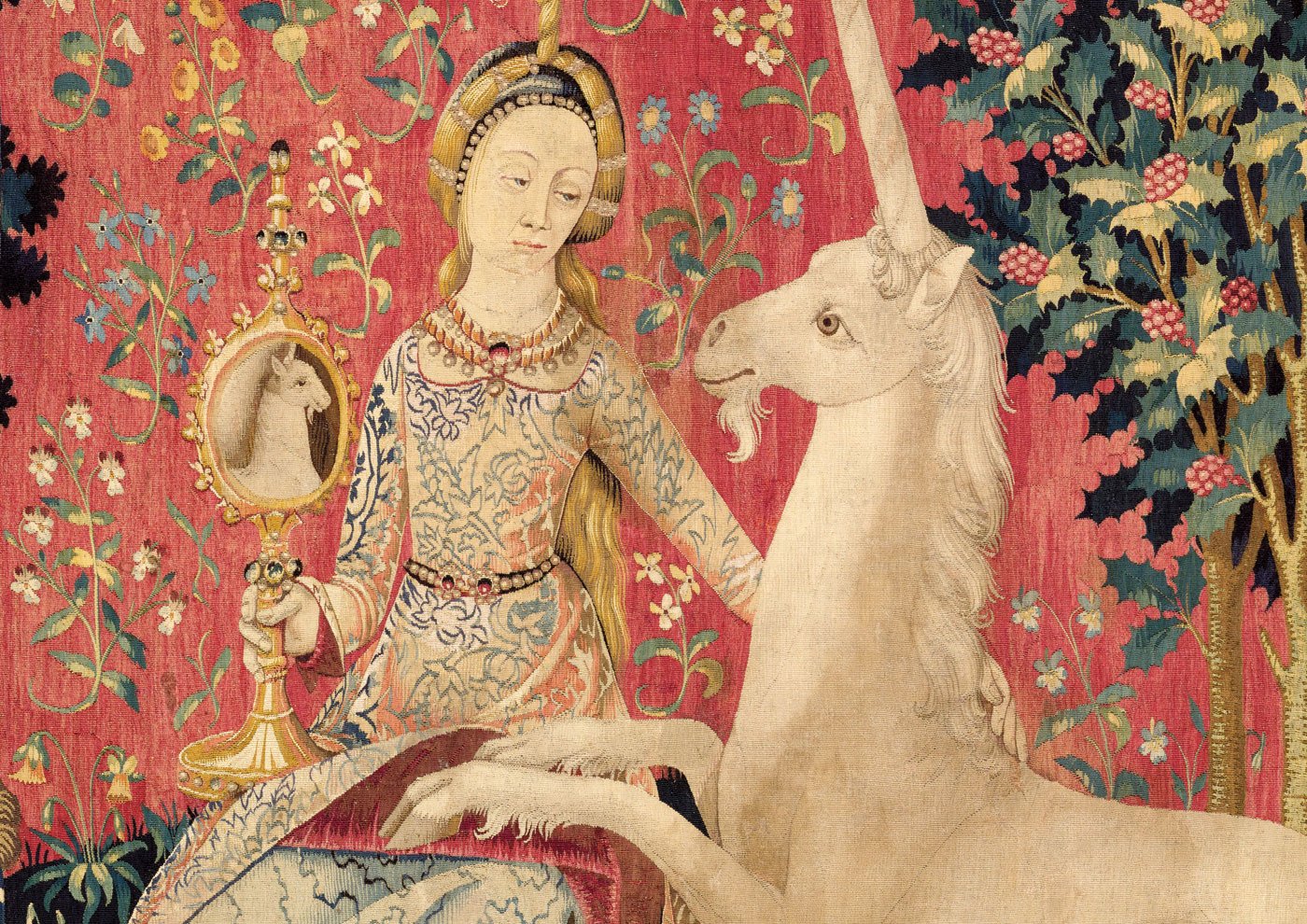Menu

'Sight', c1500 (detail), from the series 'The lady and the unicorn', Musée de Cluny – Musée national du Moyen Âge, Paris

The Lady and the Unicorn Catalogue $14.95 AUD
Gallery shopTheme
Who made them?
Formal and stylistic characteristics identify The lady and the unicorn as one of a group of works originating from the Paris workshop of the Master of Anne of Brittany.
Video
In conversation with the director of the Musée de Cluny
Art Gallery of NSW curator Jackie Dunn in conversation with the general curator of heritage and director of the Musée de Cluny, Elisabeth Taburet-Delahaye
Length: 39:08

Theme
Conserving a masterpiece
The lady and the unicorn was rediscovered in the mid 1800s in very poor condition. The tapestries were described as laying ‘abandoned and rolled into a corner … where rats and dampness had started attacking the edges’.
Restoring the Musée de Cluny's 'Lady and the unicorn'
'The lady and the unicorn’ was restored in 2012-13. Elisabeth Taburet-Delahaye, director of the museum since 2006, talks with BLOUIN ARTINFO France about the main stages of the process, as well as about the museum’s future renovation projects.

Love in the Middle Ages
The concept of courtly love first enters the medieval imaginary in the twelfth century. Allegorical medieval poems like the 'Roman de la rose’ – one of the most widely read works in France for some 300 years – are based on this notion of courtly love: coded representations of love tied to ideals of nobility and chivalry. In them, love appears as a game, with the lady as the ideal object of chivalrous conquest.
Is the fable of The lady and the unicorn a metaphor for courtly love? Some scholars have seen the tapestries as showing scenes within just such a genre – from pursuit to capitulation.
We meet the lady and her unicorn – a stand-in for her lover? – in an enclosed garden, a space that played an important role in courtly romance. Her garden recalls Eden, filled with signs of ripeness, fecundity and controlled animal desires.
Though the lady may be understood as an allegorical figure of the senses, the medieval fondness for complexity ensures she also stands as a symbol of both purity and earthly love.
Also on view
Arthur Boyd and Peter Porter: The lady and the unicorn
A collaboration between Australian artist Arthur Boyd and poet Peter Porter, 'The lady and the unicorn 1975’ is a suite of 24 etchings made by Boyd in response to Porter’s literary re-telling of the medieval myth of the unicorn.
20th century Australian art, ground level, 20 Jan – 24 Jun
Video
The lady and the unicorn
Elisabeth Taburet-Delahaye, Michel Pastoureau, Raphaëlle Déjean and Thalia Bajon-Bouzid evoke the mysteries and the charms of The lady and the unicorn.
An AMP Interactive movie. Director Anaël Dang
Length: 5:03

Music in this stillness
The lady and the unicorn has inspired many artistic responses over the past one hundred and fifty years. One of the most famous was Rainer Maria Rilke who, in his 1910 novel 'The Notebooks of Malte Laurids Brigge’, asked ‘Shouldn’t there be music in this stillness?’.
'Music in this stillness’ – our new music season – has been inspired by the tapestries and by the words of Rilke.
The commissioned music features a small portative organ like that at the centre of the tapestry 'Hearing’. The instrument, in the collection of the Museum of Applied Arts and Sciences, Sydney (MAAS), was made in 1986-88 by Ronald Sharp, whose master work is the Sydney Opera House Grand Organ. We believe this is the first time Sharp’s organ has been played since it was made and we thank MAAS for supporting the playing of instruments from their collection, bringing them to life, and for lending the organ to us for our music season.
'Music in this stillness’ premiered at Art After Hours. Curated by Jason Catlett, with performances led by Music Director Brooke Green, this project was made possible by an anonymous donation to the Art Gallery Foundation in memory of Steven Alward, a patron of both the visual arts and new music.

